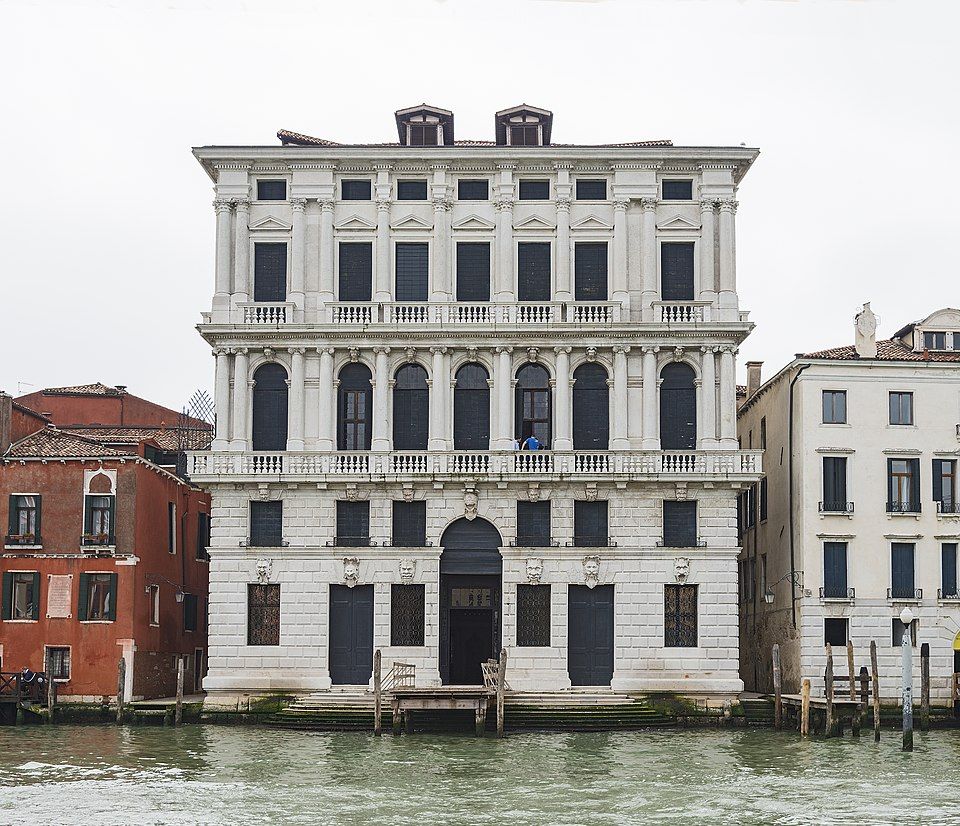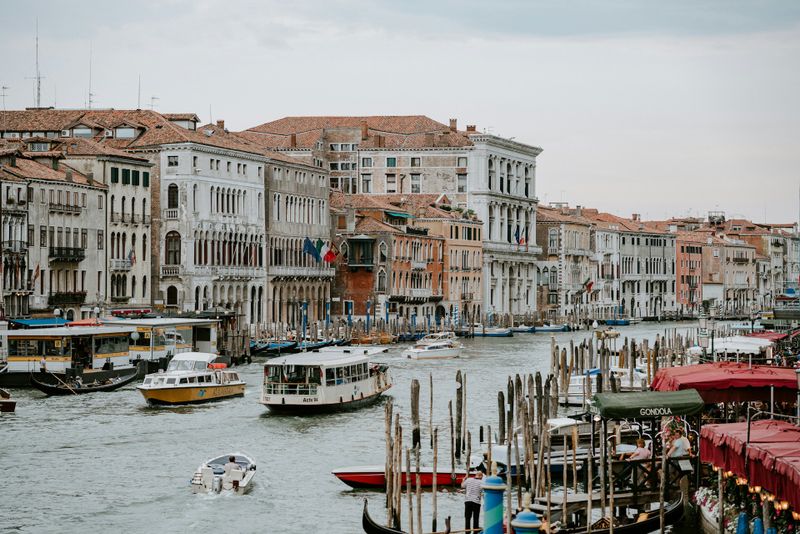Hey dear traveler, lately it's been liking the Fondazione Prada Venice 2025 exhibition so much, Diagrams, let's delve into it.
Today we’re taking you to the contemporary and artistic heart of one of the most magical cities in the world. Between silent alleys and golden reflections on the canals lies a place that is both a treasure chest of art, a hub of experimentation, and a temple of contemporary creativity: we’re talking about the Fondazione Prada Venice.
Venice isn’t just gondolas and gothic palaces: it’s also contemporary art, aesthetic provocation, and cultural reflection.
Let’s explore everything in this guide by Venice Insider Guide, your go-to source for experiencing Venice like a true insider.
Fondazione Prada Venice Exhibition

Each year, the Foundation hosts contemporary art exhibitions of international relevance. These shows are curated with an innovative and often provocative approach, frequently featuring renowned names such as:
- Jannis Kounellis
- Käthe Kollwitz
- Marina Abramović
- Carsten Höller
- John Baldessari
- Luigi Ontani
One of the most famous exhibitions hosted in the past was Art or Sound, exploring the relationship between sculpture and music, sound objects, and hybrid instruments.
Current Exhibition (2025): The exhibition currently on display is "Diagrams – The Logic of Images", exploring the concept of diagrams in contemporary art. It’s a journey through visual language, conceptual art, and artistic logic, featuring works by international artists and rare archival materials.
Diagrams: Fondazione Prada Venice 2025 Exhibition
“Diagrams” is the title of the current exhibition at Ca’ Corner della Regina, and it brings a new curatorial vision to the space.
Hosted at the historic Ca’ Corner della Regina in Venice, the exhibition delves into the multifaceted world of diagrams, exploring their role as tools of knowledge, communication, and power
What can you expect from this show? The Fondazione Prada Venice 2025 exhibition:
- Over 80 works, including paintings, sculptures, installations, and digital media
- A conceptual red thread: the diagram as a visual representation of thought
- Artists from all over the world, with iconic and unpublished works
- A dynamic exhibition path: the show unfolds across three floors, guiding visitors through an immersive intellectual and sensory experience
It’s a must-see for fans of conceptual art, philosophy, and the architecture of ideas.
A multidisciplinary Exploration
"Diagrams" is not a conventional art exhibition; it's a multidisciplinary project that brings together architecture, cartography, sociology, and visual arts. The exhibition features a diverse array of materials, including historical documents, contemporary artworks, and data visualizations, all centered around the concept of the diagram.
The curatorial approach emphasizes the diagram's capacity to reveal hidden structures and relationships within various systems, be it social, political, or economic. By presenting diagrams as both analytical tools and aesthetic objects, the exhibition invites visitors to reconsider the ways in which information is organized and interpreted.
Highlights of the Exhibition
Among the notable works on display is William Playfair's 1805 "Universal Commercial History," a pioneering example of statistical graphics that charts global wealth over time. Despite its innovative visualization, the chart notably omits references to slavery, prompting reflections on the selective nature of data representation.
Another significant piece is Charles Joseph Minard's 1869 diagram depicting Napoleon's disastrous Russian campaign. This visual narrative combines geographical and statistical data to illustrate the army's diminishing numbers, offering a powerful commentary on the human cost of war.
The exhibition also includes early 20th-century infographics by W.E.B. Du Bois, which highlight racial inequalities in America. These works demonstrate the diagram's potential as a tool for social critique and advocacy.
Thematic sections
"Diagrams" is organized into thematic sections that explore various aspects of diagrammatic representation:
- The Body: Examines anatomical diagrams and their evolution, juxtaposing historical illustrations with contemporary medical imaging
- The Built Environment: Focuses on architectural plans and urban mapping, highlighting how diagrams shape our understanding of space
- Inequality and Migration: presents visualizations that address social disparities and population movements, emphasizing the diagram's role in policy and humanitarian contexts
- Resources and Sustainability: features diagrams related to environmental issues, including resource distribution and ecological footprints
Each section encourages visitors to engage critically with the material, fostering an awareness of the diagram's influence on perception and decision-making.
An invitation to reflect
By assembling a wide range of diagrammatic works, "Diagrams" challenges the notion of objectivity in visual data. It underscores the idea that diagrams are not merely neutral conveyors of information but are imbued with the intentions and biases of their creators.
The exhibition invites visitors to reflect on the power dynamics inherent in data representation and to consider how diagrams can both illuminate and obscure truths. In doing so, it offers a timely exploration of the visual languages that shape our understanding of the world.
Date Diagrams, Fondazione Prada Venice 2025 Exhibition
From May 10 to November 24, 2025, Fondazione Prada Venice presents "Diagrams," an innovative exhibition conceived by AMO, the research and design studio of OMA, led by Rem Koolhaas.
What’s at Fondazione Prada Venezia?
The Fondazione Prada in Venice is much more than just an exhibition space. It’s a crossroads of past and future, where art interacts with the historical architecture of the Venetian lagoon. Located in Ca’ Corner della Regina, a baroque palace overlooking the Grand Canal, the Venetian branch of the foundation offers a carefully curated annual program of temporary exhibitions, site-specific installations, and multidisciplinary projects.
So what exactly will you find inside?
- Contemporary and conceptual art exhibitions: works by international artists, often never-before-seen, that invite deep reflection.
- Immersive installations: stunning setups that reimagine historical spaces through a contemporary lens.
- Cutting-edge curatorial projects: the Foundation's curatorial work is always innovative and intellectually stimulating.
- Events and talks: depending on the season, there are conferences, artist talks, and discussions with philosophers, critics, and creatives.
All this within a breathtaking architectural context where 18th-century stuccoes meet industrial minimalism.
Where is Fondazione Prada Venice Located?
Fondazione Prada Venice is housed in the magnificent Ca’ Corner della Regina, along the Grand Canal, in the Santa Croce district.
The exact address is:
Ca’ Corner della Regina
Santa Croce 2215
30135 Venice (VE), Italy
It’s just a 10-minute walk from Santa Lucia Train Station, or easily reachable by vaporetto (water bus) by getting off at San Stae stop.
Once you arrive, let yourself be enchanted by the palace’s grand façade—a splendid example of Venetian baroque—and get ready to enter a world where every room tells a different story.
Opening hours of Fondazione Prada Venice
Opening hours may vary depending on the season and current exhibitions, but typically, Fondazione Prada Venice follows this schedule:
- Open Thursday to Sunday
- Hours: 10:00 AM – 6:00 PM
- Closed: Monday, Tuesday, and Wednesday
Last admission is usually one hour before closing time, so try not to arrive too late!
It’s a good idea to check the official website for the latest updates, especially during holidays or special events.
How much does it cost to enter Fondazione Prada in Venice?
Here’s some great news for all art and culture lovers: entry to Fondazione Prada Venice is free!
Yes, you read that right: free of charge.
The Foundation actively promotes cultural access without financial barriers. There are no tickets to buy, and no mandatory reservations (except during special events).
It’s a fantastic opportunity to enjoy high-level contemporary art in a stunning setting—completely for free.
Fondazione Prada Venice tickets or free entry?
Let’s say it again, because it’s worth repeating: you don’t need tickets to enter Fondazione Prada Venice.
- Free entry for everyone
- No prior reservation required
- You can walk in during opening hours
However, during special events, openings, or talks, you may need to reserve a spot online. Always check the official website for the latest updates.
Fondazione Prada Venice: Everything you need to know
If you're planning your visit, here’s everything you need to know in a clear and practical format.
The official name is Fondazione Prada Venice, and it’s located in the stunning Baroque palace of Ca’ Corner della Regina, right on the Grand Canal.
The exact address is Santa Croce 2215, 30135 Venice, in one of the city’s most authentic districts.
Admission is completely free. You don’t need to buy tickets or make a reservation in advance—an amazing opportunity to enjoy contemporary art in one of the world’s most beautiful cities at no cost.
The opening hours are as follows: the Foundation is open from Thursday to Sunday, from 10:00 AM to 6:00 PM. Keep in mind that the last entry is usually allowed up to one hour before closing, so it’s best to arrive by 5:00 PM.
How to get there? It’s very easy. You can take the vaporetto (water bus) and get off at the San Stae stop, just a short walk from the venue. If you're arriving by train at Venice Santa Lucia, you can reach the Foundation on foot in about 10 minutes, passing through the charming streets of the historic center.
What is there to see? Alongside the regularly changing temporary exhibitions, you’ll find site-specific installations, conceptual works, and the architectural beauty of the palace itself—with its original frescoes and marble floors.
The current exhibition is titled "Diagrams – The Logic of Images": an engaging journey through conceptual art and visual reflection, exploring the diagram as both a creative and intellectual tool. A must-see for those looking for fresh perspectives on contemporary art.
How long does it take to visit Fondazione Prada Venice?
The time you’ll spend at Fondazione Prada Venice depends on your pace and interest in the exhibitions, but on average:
- Quick visit: 30 – 45 minutes (for a general overview)
- Standard visit: 1 – 1.5 hours (to read panels and explore the works)
- In-depth visit: 2+ hours (for contemporary art lovers wanting a deep dive)
Each floor of the palace has a unique atmosphere: some visitors are fascinated by the frescoed ceilings, others get absorbed in the soft light of multimedia installations. That’s the beauty of it—everyone finds their own rhythm.
Fondazione Prada Venice: What to see
Every visit to Fondazione Prada Venice is a different experience because the exhibitions change regularly. But there are some highlights you shouldn’t miss:
- The architecture of the palace: Ca’ Corner della Regina is a masterpiece in itself. Built in the 18th century, the residence features baroque stuccoes, Venetian marble floors, and period frescoes.
- Site-specific installations: some works are created specifically to interact with the palace’s unique spaces. Art merges with history in a fascinating dialogue.
- The Foundation’s archive and library: for those who love research and reading, there's a dedicated archive area available upon request.
- The internal courtyard: often home to temporary sculptures or installations, and perfect for a scenic photo with the palace façade in the background.
Conclusion
Dear travelers, now that you know all about Fondazione Prada Venice 2025 exhibition, Diagrams, you just have to go and visit it.
Fondazione Prada Venice is a must-see stop for anyone looking to discover the most unexpected and contemporary side of Venice. In a city where every corner breathes history, this art space offers a new, thought-provoking, and innovative perspective. It’s the perfect place for those who seek a cultural experience beyond the usual tourist routes.
Whether you're an art lover or just curious, you’ll find a unique and inspiring experience here.
And remember: art, like Venice, is even more beautiful when shared.

